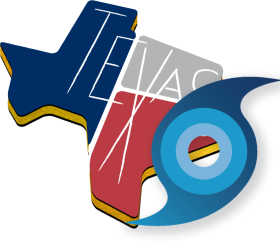
TxHRH104: Resources Available When Mass Effect Incidents/Casualties Happen
Course Description:
TxHRH104: Resources Available When Mass Effect Incidents/Casualties Happen is fourth in a eight-course learning series.
When local hospitals and clinics reach capacity after a disaster, additional treatment and health resources are available. Texas has mass effect/casualty response capabilities and resources in all levels of government, non-profit organizations, and health coalitions.
Target Audience
Public Health, First Responders, Emergency Response and Preparedness Professionals and Healthcare Practitioners
Learning Objectives
- Define Mass Casualty Incidents and surge capacity
- Identify different disaster classifications and emergency declarations
- Describe the effects of Mass Event Incidents on medical and public health resource capacity and the use of alternate care site
- Describe the request process for emergency resources
- Define Mass Fatality Incidents and identify MFI services and worker protections
Instructor:

Elaine Cotton, MPH
Elaine Cotton, MPH graduated from Texas A&M University in 2018 with a Bachelor of Arts degree in International Studies: Politics and Diplomacy.
She recently graduated from the Texas A&M School of Public Health with a Master of Public Health, concentrating in Environmental Health.
She interned with the Texas Health Institute in the summer of 2019 before working part-time during her last year of graduate school. Her areas of focus include environmental health, emergency management, disaster preparedness, and occupational exposures.
She is currently pursuing a commission with the United States Navy as an Environmental Health Officer.
Available Credit
- 1.00 Participation/CETulane Professional and Continuing Education (PaCE) awards 1.00 hour(s) of credit for completing TxHRH104: Resources Available When Mass Effect Incidents/Casualties Happen
Price
Required Hardware/software
System Settings
This course is designed to work most effectively if your computer and internet connection meet certain minimal requirements. This course can be accessed using a Windows 10 PC or a Mac with High Sierra1, Mojave, or Catalina. Pop-up blockers should be disabled when viewing the course. Internet Explorer 11 (for Windows 10), or the current version of Google Chrome, Mozilla Firefox, or Apple Safari (for Windows 10 and or Mac) is required. Many of our courses require Java and JavaScript enabled.
Links to External Websites
Links to websites outside this course will open in a new window or tab. Some browsers may minimize the course window. If this occurs, maximize the course window to return to the course.
Adobe Acrobat Reader (for desktops and laptops)
Adobe Acrobat Reader is required to access some documents in this course. If you need to download a free copy of Acrobat Reader, click here.
Internet Connection Speed
A minimum download speed of 1.5 Mbps is recommended for an optimal experience, which is commonly the speed associated with a basic DSL or a cellular/satellite connection. A faster connection, such as cable or fiber service, with further enhance your online experience. A Wi-Fi connection is generally acceptable, but it is dependent upon one of the two services mentioned above. You can check your internet connection speed at http://www.speedtest.net/.

 Facebook
Facebook Twitter
Twitter LinkedIn
LinkedIn Forward
Forward